-
 Bitcoin
Bitcoin $75,644.7424
-5.84% -
 Ethereum
Ethereum $1,424.9114
-9.93% -
 Tether USDt
Tether USDt $0.9995
-0.02% -
 XRP
XRP $1.7602
-7.96% -
 BNB
BNB $543.7754
-2.88% -
 USDC
USDC $1.0003
0.02% -
 Solana
Solana $103.5467
-6.08% -
 TRON
TRON $0.2273
-1.27% -
 Dogecoin
Dogecoin $0.1397
-8.16% -
 Cardano
Cardano $0.5471
-8.27% -
 UNUS SED LEO
UNUS SED LEO $9.0272
0.86% -
 Toncoin
Toncoin $2.9566
-4.71% -
 Chainlink
Chainlink $10.7191
-7.97% -
 Stellar
Stellar $0.2176
-7.09% -
 Avalanche
Avalanche $16.0088
-6.83% -
 Sui
Sui $1.9078
-7.84% -
 Shiba Inu
Shiba Inu $0.0...01048
-9.51% -
 Hedera
Hedera $0.1454
-5.28% -
 MANTRA
MANTRA $6.1800
-2.34% -
 Dai
Dai $1.0001
0.00% -
 Bitcoin Cash
Bitcoin Cash $264.8618
-5.07% -
 Polkadot
Polkadot $3.3292
-8.63% -
 Litecoin
Litecoin $68.2114
-4.87% -
 Ethena USDe
Ethena USDe $0.9987
-0.02% -
 Bitget Token
Bitget Token $3.9465
-6.70% -
 Hyperliquid
Hyperliquid $11.6987
-1.68% -
 Pi
Pi $0.5545
-6.17% -
 Monero
Monero $195.1588
-4.48% -
 OKB
OKB $50.0883
-1.96% -
 Uniswap
Uniswap $4.6678
-10.32%
Steps to buy Ethereum on Binance wallet
To buy Ethereum on Binance, set up and verify your account, deposit funds, then trade for ETH, ensuring to secure it with 2FA and strong passwords.
Apr 04, 2025 at 08:49 pm
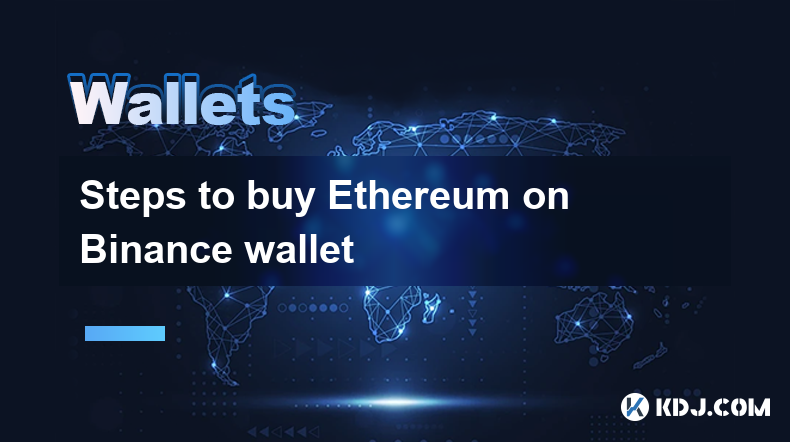
Buying Ethereum on the Binance wallet involves several straightforward steps that can be completed by anyone with a basic understanding of cryptocurrency transactions. Before diving into the process, it's essential to ensure you have a Binance account and have completed the necessary identity verification steps. Ethereum, often referred to as ETH, is one of the most popular cryptocurrencies and is widely used for various decentralized applications and smart contracts. This guide will walk you through the process of purchasing Ethereum on the Binance platform, ensuring you can do so safely and efficiently.
Setting Up Your Binance Account
Before you can buy Ethereum on Binance, you need to set up and verify your account. Here are the steps to get started:
- Visit the Binance website and click on the "Register" button.
- Fill in your email address and create a strong password.
- Complete the verification process by entering the code sent to your email.
- Go through the KYC (Know Your Customer) process by submitting your identification documents. This step is crucial for complying with regulatory requirements and ensuring the security of your account.
Once your account is set up and verified, you're ready to proceed with buying Ethereum.
Adding Funds to Your Binance Account
To buy Ethereum, you'll need to deposit funds into your Binance account. Here's how you can do it:
- Navigate to the "Wallet" section on the Binance platform.
- Click on "Fiat and Spot" to access your spot wallet.
- Select "Deposit" and choose the currency you want to deposit (e.g., USD, EUR).
- Follow the instructions to complete the deposit. You can use bank transfer, credit/debit card, or other supported payment methods.
After your funds are successfully deposited, you can move on to the next step of purchasing Ethereum.
Buying Ethereum on Binance
Now that you have funds in your Binance account, you can buy Ethereum. Follow these steps:
- Go to the "Trade" section on the Binance platform.
- Choose "Classic" or "Advanced" trading, depending on your preference.
- In the search bar, type "ETH" to find the Ethereum trading pair you want to use (e.g., ETH/USDT, ETH/BTC).
- Enter the amount of Ethereum you want to buy and review the total cost.
- Click on "Buy ETH" to complete the transaction.
Your Ethereum will be credited to your spot wallet once the transaction is confirmed.
Transferring Ethereum to Your Binance Wallet
If you want to move your Ethereum to your Binance wallet for storage or other purposes, follow these steps:
- Go to the "Wallet" section and select "Fiat and Spot."
- Find Ethereum (ETH) in your list of assets and click on "Withdraw."
- Enter the amount of Ethereum you want to transfer and the destination address (your Binance wallet address).
- Review the transaction details and click on "Submit."
The Ethereum will be transferred to your Binance wallet once the transaction is processed.
Securing Your Ethereum in the Binance Wallet
After purchasing and transferring Ethereum to your Binance wallet, it's important to ensure its security. Here are some tips:
- Enable Two-Factor Authentication (2FA) on your Binance account to add an extra layer of security.
- Use a strong and unique password for your Binance account.
- Regularly monitor your account activity and report any suspicious transactions immediately.
- Consider using a hardware wallet for long-term storage of your Ethereum to enhance security.
By following these steps and security measures, you can safely buy and store Ethereum on the Binance platform.
Common Questions About Buying Ethereum on Binance Wallet
Q: Do I need to complete KYC to buy Ethereum on Binance?
A: Yes, you need to complete the KYC process to comply with regulatory requirements and to be able to deposit funds and buy Ethereum on Binance.
Q: What payment methods can I use to deposit funds on Binance?
A: Binance supports various payment methods, including bank transfers, credit/debit cards, and other digital payment options. The availability of these methods may vary depending on your location.
Q: How long does it take to buy Ethereum on Binance?
A: The time it takes to buy Ethereum on Binance depends on the payment method you use for depositing funds. Bank transfers may take a few days, while credit/debit card transactions are usually processed more quickly.
Q: Can I transfer Ethereum from Binance to another wallet?
A: Yes, you can transfer Ethereum from your Binance wallet to another wallet by following the withdrawal process and entering the destination address.
Q: Is it safe to store Ethereum in the Binance wallet?
A: Storing Ethereum in the Binance wallet is generally safe, especially if you enable 2FA and use strong security practices. However, for long-term storage, consider using a hardware wallet for added security.
Disclaimer:info@kdj.com
The information provided is not trading advice. kdj.com does not assume any responsibility for any investments made based on the information provided in this article. Cryptocurrencies are highly volatile and it is highly recommended that you invest with caution after thorough research!
If you believe that the content used on this website infringes your copyright, please contact us immediately (info@kdj.com) and we will delete it promptly.
- "Cardano (ADA) Price Could Dip Below $0.60, Following Previous Market Cycle"
- 2025-04-09 05:10:12
- BONK, the well-known meme coin, has risen over 35% in the last week, attracting meme coin investors in the market. So, what caused this rally?
- 2025-04-09 05:10:12
- Bitcoin (BTC) Investors May Not Exactly Feel It, but BTC Has Been a Relatively Good Bet
- 2025-04-09 05:05:12
- Donald's Bitcoin (DONBTC) Could Turn Early Investors into Multi-Millionaires, Like Shiba Inu (SHIB) and Dogecoin (DOGE) Did
- 2025-04-09 05:05:12
- 6 Upcoming Kraken Listings That Could Be the Next Big Thing in Crypto
- 2025-04-09 05:00:13
- COTI Unveils New Privacy-Focused Blockchain to Reshape Web3 Transactions
- 2025-04-09 05:00:13
Related knowledge
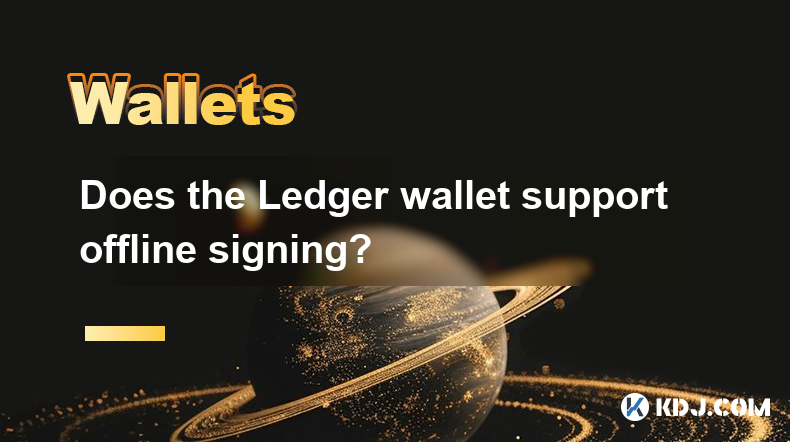
Does the Ledger wallet support offline signing?
Apr 09,2025 at 04:49am
Introduction to Ledger Wallet and Offline SigningThe Ledger wallet is a popular hardware wallet used by cryptocurrency enthusiasts to securely store their digital assets. One of the key features that users often inquire about is offline signing. Offline signing, also known as cold signing, is a security measure that allows users to sign transactions wit...
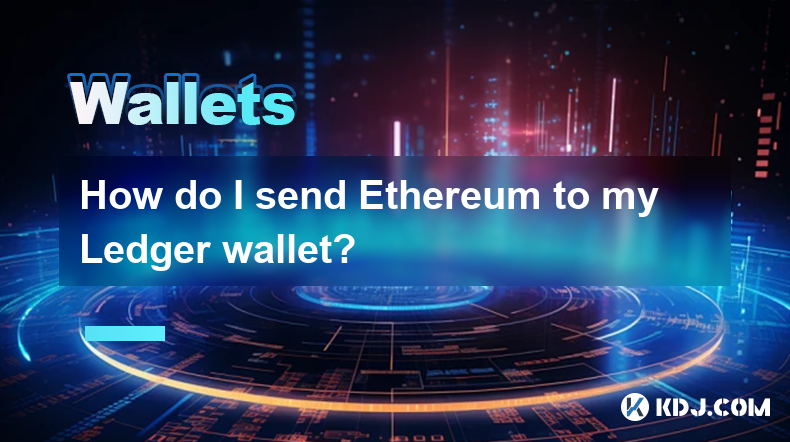
How do I send Ethereum to my Ledger wallet?
Apr 09,2025 at 03:21am
Sending Ethereum to your Ledger wallet involves a few straightforward steps, but it's crucial to follow them carefully to ensure the security of your funds. In this guide, we'll walk you through the process of transferring Ethereum to your Ledger wallet, ensuring that you understand each step and the necessary precautions. Preparing Your Ledger WalletBe...
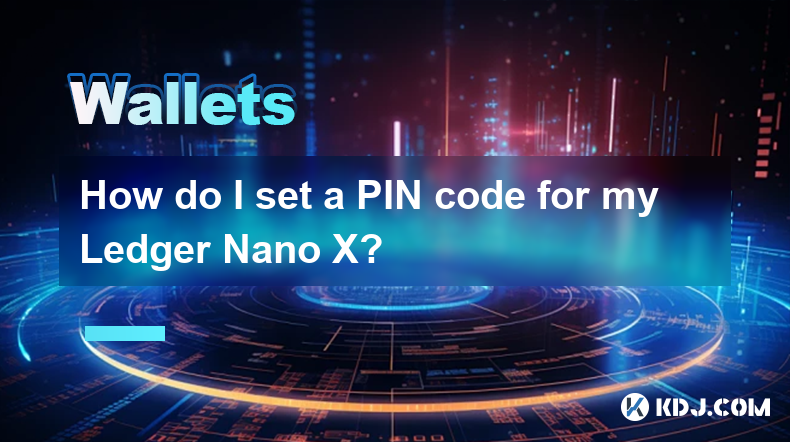
How do I set a PIN code for my Ledger Nano X?
Apr 08,2025 at 11:14pm
Setting a PIN code for your Ledger Nano X is a crucial step in securing your cryptocurrency assets. The PIN code acts as a primary layer of security, ensuring that only you can access your device. In this article, we will guide you through the process of setting up a PIN code on your Ledger Nano X, ensuring that you follow each step meticulously to main...
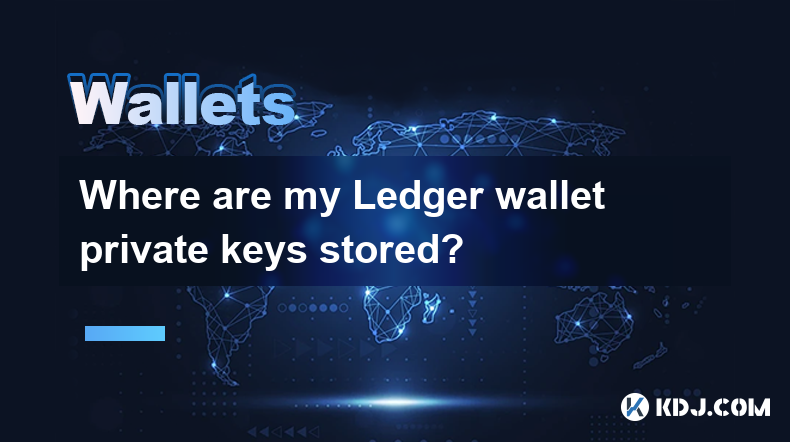
Where are my Ledger wallet private keys stored?
Apr 08,2025 at 10:35pm
When using a Ledger hardware wallet, one of the most critical aspects to understand is the storage and management of your private keys. This article will delve into the specifics of where your Ledger wallet private keys are stored, ensuring you have a comprehensive understanding of their security and accessibility. Understanding Private Keys in Ledger W...
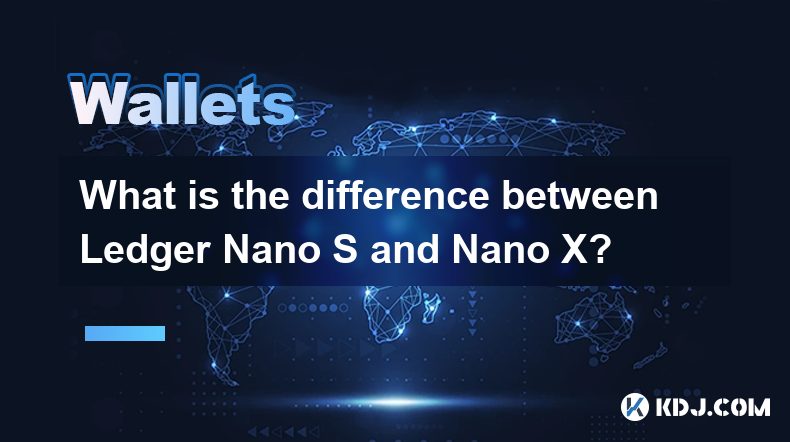
What is the difference between Ledger Nano S and Nano X?
Apr 09,2025 at 12:49am
When it comes to securing your cryptocurrencies, hardware wallets are often recommended as the safest option. Among the most popular hardware wallets are the Ledger Nano S and Ledger Nano X. Both devices are produced by Ledger, a well-known company in the cryptocurrency security industry. This article will delve into the differences between these two de...

How do I enable the Shield Transaction feature on Trezor?
Apr 08,2025 at 10:28pm
Enabling the Shield Transaction feature on Trezor involves a series of steps that allow you to enhance the privacy of your cryptocurrency transactions. This feature is particularly useful for users who want to protect their transaction history from being easily traced on the blockchain. In this article, we will guide you through the process of enabling ...

Does the Ledger wallet support offline signing?
Apr 09,2025 at 04:49am
Introduction to Ledger Wallet and Offline SigningThe Ledger wallet is a popular hardware wallet used by cryptocurrency enthusiasts to securely store their digital assets. One of the key features that users often inquire about is offline signing. Offline signing, also known as cold signing, is a security measure that allows users to sign transactions wit...

How do I send Ethereum to my Ledger wallet?
Apr 09,2025 at 03:21am
Sending Ethereum to your Ledger wallet involves a few straightforward steps, but it's crucial to follow them carefully to ensure the security of your funds. In this guide, we'll walk you through the process of transferring Ethereum to your Ledger wallet, ensuring that you understand each step and the necessary precautions. Preparing Your Ledger WalletBe...

How do I set a PIN code for my Ledger Nano X?
Apr 08,2025 at 11:14pm
Setting a PIN code for your Ledger Nano X is a crucial step in securing your cryptocurrency assets. The PIN code acts as a primary layer of security, ensuring that only you can access your device. In this article, we will guide you through the process of setting up a PIN code on your Ledger Nano X, ensuring that you follow each step meticulously to main...

Where are my Ledger wallet private keys stored?
Apr 08,2025 at 10:35pm
When using a Ledger hardware wallet, one of the most critical aspects to understand is the storage and management of your private keys. This article will delve into the specifics of where your Ledger wallet private keys are stored, ensuring you have a comprehensive understanding of their security and accessibility. Understanding Private Keys in Ledger W...

What is the difference between Ledger Nano S and Nano X?
Apr 09,2025 at 12:49am
When it comes to securing your cryptocurrencies, hardware wallets are often recommended as the safest option. Among the most popular hardware wallets are the Ledger Nano S and Ledger Nano X. Both devices are produced by Ledger, a well-known company in the cryptocurrency security industry. This article will delve into the differences between these two de...

How do I enable the Shield Transaction feature on Trezor?
Apr 08,2025 at 10:28pm
Enabling the Shield Transaction feature on Trezor involves a series of steps that allow you to enhance the privacy of your cryptocurrency transactions. This feature is particularly useful for users who want to protect their transaction history from being easily traced on the blockchain. In this article, we will guide you through the process of enabling ...
See all articles






















































































